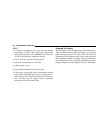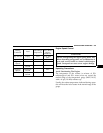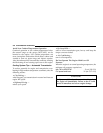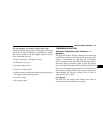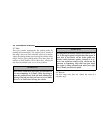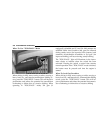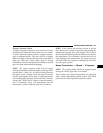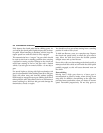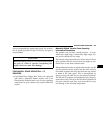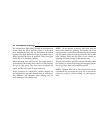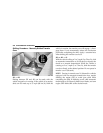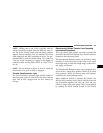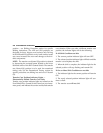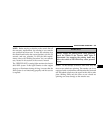
Fully depress the clutch pedal before shifting gears. As
you release the clutch pedal, lightly depress the accelera-
tor pedal. When launching a stationary vehicle, keep the
engine speed low until the clutch is fully engaged.
This transmission has a “creeper” 1st gear which should
be used to start from a standing position when carrying
a payload or towing a trailer. Damage to the clutch can
result from starting in 2nd or 3rd gear with a loaded
vehicle. Use each gear in numerical order – do not skip a
gear.
For steady highway driving with light acceleration, 6th
gear is recommended. When shifting from 4th to 5th gear,
apply side effort away and forward without pushing
hard enough to engage Reverse gear. Shifting from 5th to
6th requires the same side effort or the lever will return to
center resulting in a shift into 4th gear and damage the
transmission, clutch, or engine.
You should use low gear when starting from a standing
position if under a heavy load.
To shift into Reverse, come to a complete stop. Depress
the clutch and pause briefly to allow the gear train to
stop. Move the shift lever from the Neutral position
straight across and up into Reverse.
Never drive with your foot resting on the clutch pedal, or
attempt to hold the vehicle on a hill with the clutch pedal
partially engaged, as this will cause abnormal wear on
the clutch.
Downshifting
Moving from a high gear down to a lower gear is
recommended to preserve brakes when driving down
steep hills. In addition, downshifting at the right time
provides better acceleration when you desire to resume
speed. Downshift progressively. Do not skip gears to
242 STARTING AND OPERATING



